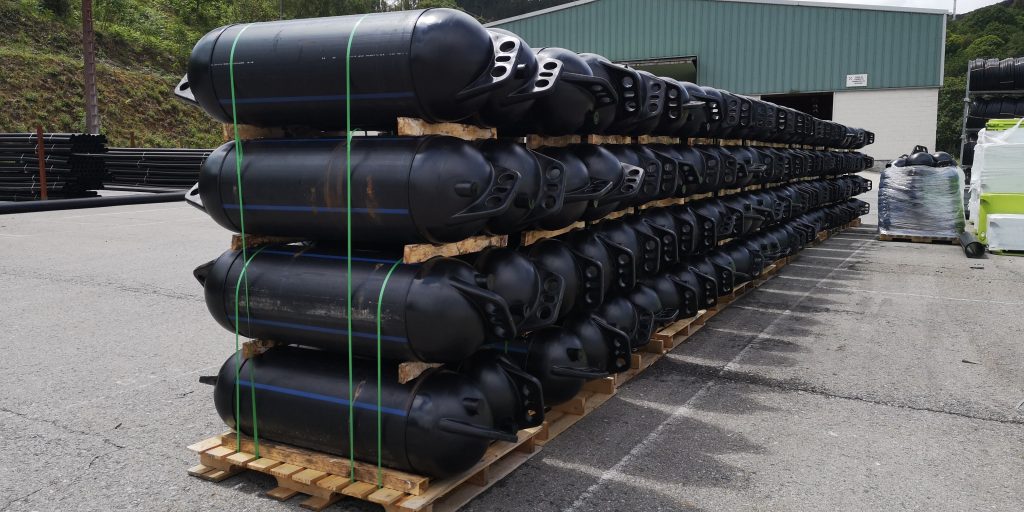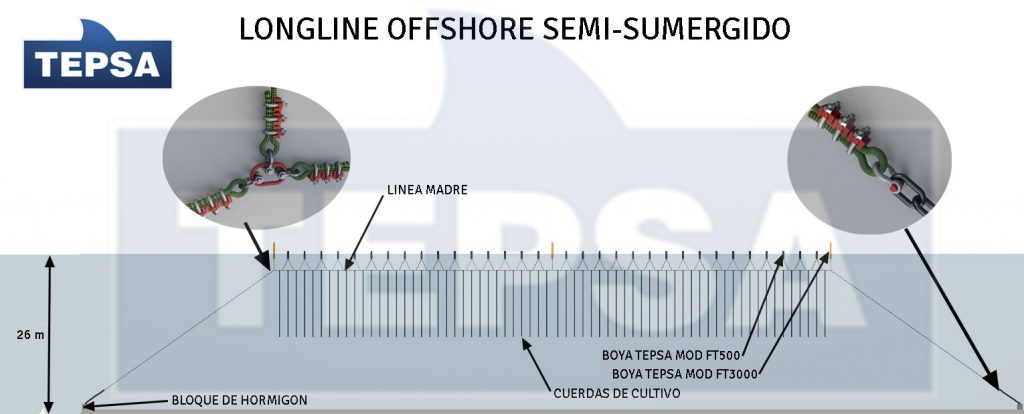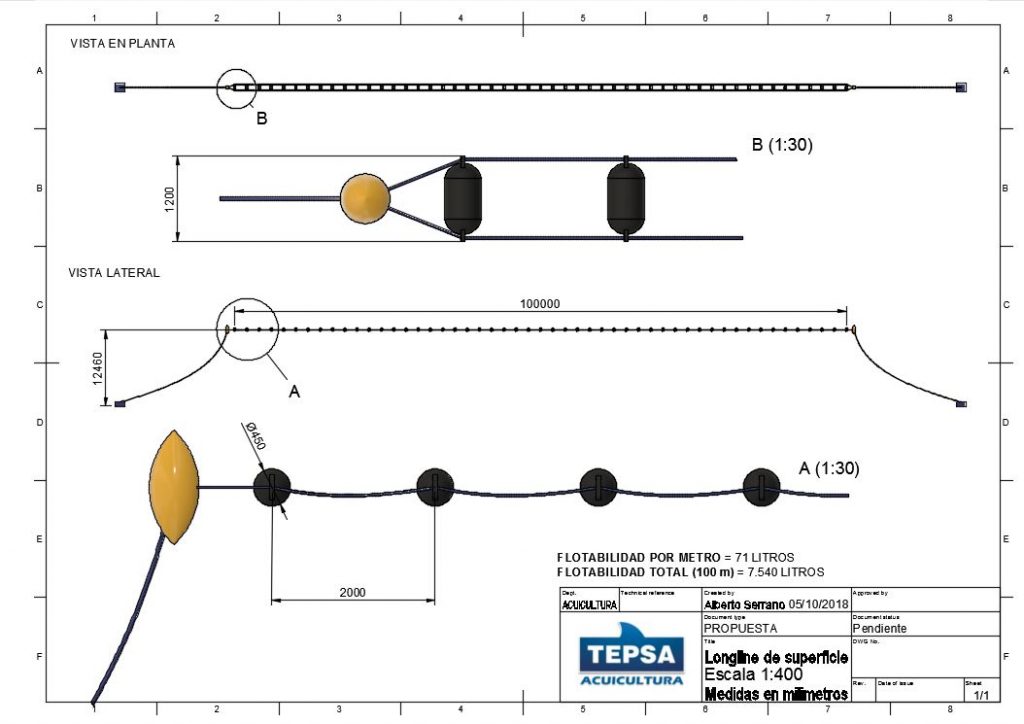
Offshore floats
The most widespread offshore mussel farming facilities are the submergedlong-lines, this is the reason why this new buoys manufactured at TEPSA have been designed to resist deep immersions. The following characteristics serve to this purpose:
- Manufactured in High Density Polyethylene (HDPE)
- Round design with inside reinforcements
- Walls more than 11 mm thick
- Watertight valve for internal pressurization
- Reinforced handles
- Fusion welding

Adapted to the farmer necessities
Manufactured unit by unit what allows different sizes supplying in order to adapt the product to the different floating necessities of every different system. The standard version are classified according to the pipe length and the volume containerd in them:
- FT0 Model, without pipe, 65 litres capacity.
- FT500 Model, with 500mm of pipe and 142 litres capacity.
- FT700 Model, with 700mm of pipe and 174 litres capacity.
- FT1000 Model, with 1000mm of pipe and 222 litres capacity.
- FT2000 Model, with 2000mm of pipe and 381 litres capacity.
- FT3000 Model, with 3000mm of pipe and 540 litres capacity.
- FT6000 Model, with 6000mm of pipe and 1.017 litres capacity.
They can be placed in the system vertically or horizontally. The vertical placement allows to build semi-submerged long-lines where the swell and current strength are much less transmitted to the crop and its use is much easier than with the submerged ones. Below you can see an example of semi-submerged long-line with vertical buoys.

Different measurements can be combined to always maintain the perfect floatability in the farming line
A floatation excess in the long-line can be counter-productive due to the fact that it generates more movement in the farming line what can cause the release of the mussel, especially in surface long-lines. Because of this, a lot of farmers start farming using small buoys (FT0 and FT500) and whenever the ropes weight increases and the floatability starts decreasing, they add bigger buoys (FT3000 y FT6000). Below you will find a surface long-line diagram when it is launched, that means, without compensation buoys.

The trend in the offshore are the submerged long-lines
The mussel farming in offshore conditions usually requires to submerge the farming line to avoid the swell strength and the superficial current generated during the winter rough weather. That can be done thanks to an tension anchoring system with intermediate brackets. To prevent a possible collapse in the line and its sinking they used to be equipped with a floatability higher than the maximum farming capacity estimated. In the diagram below you can see a offshore submerged mussel farming long-line.

The FT TEPSA buoys can be adapted to any mussel farming system and, because of its design and configuration, they are resistant to the most extreme work conditions.
Please, do not hesitate to contact us in case you want to receive more information. Email address: comercial@e-tepsa.com



